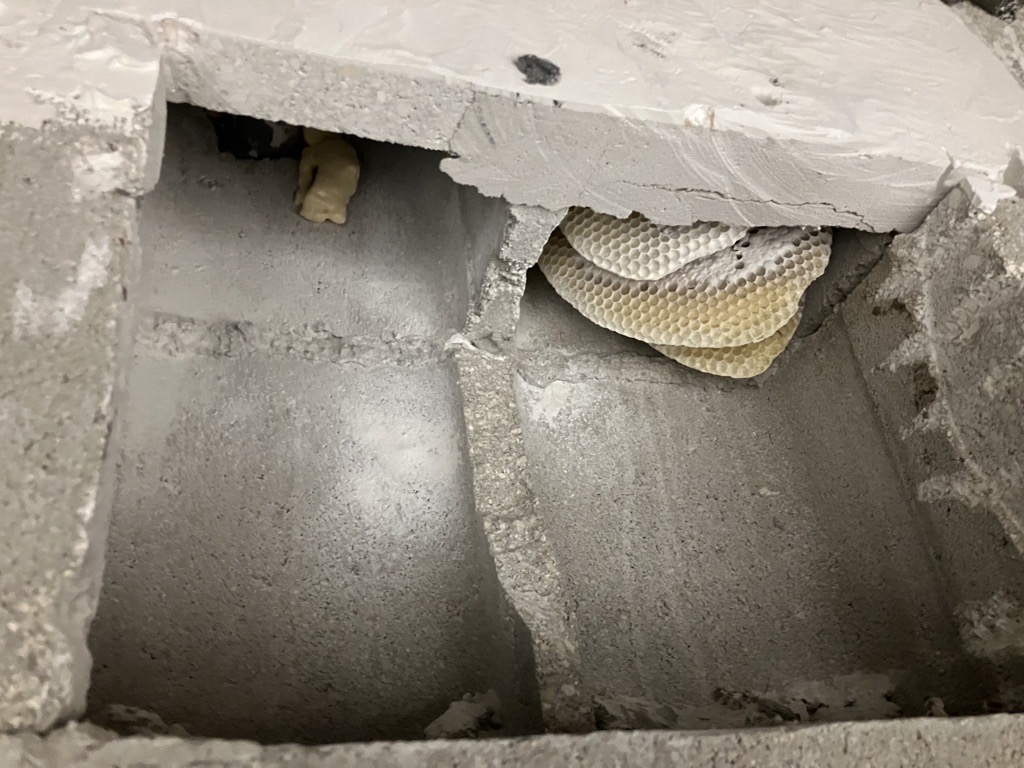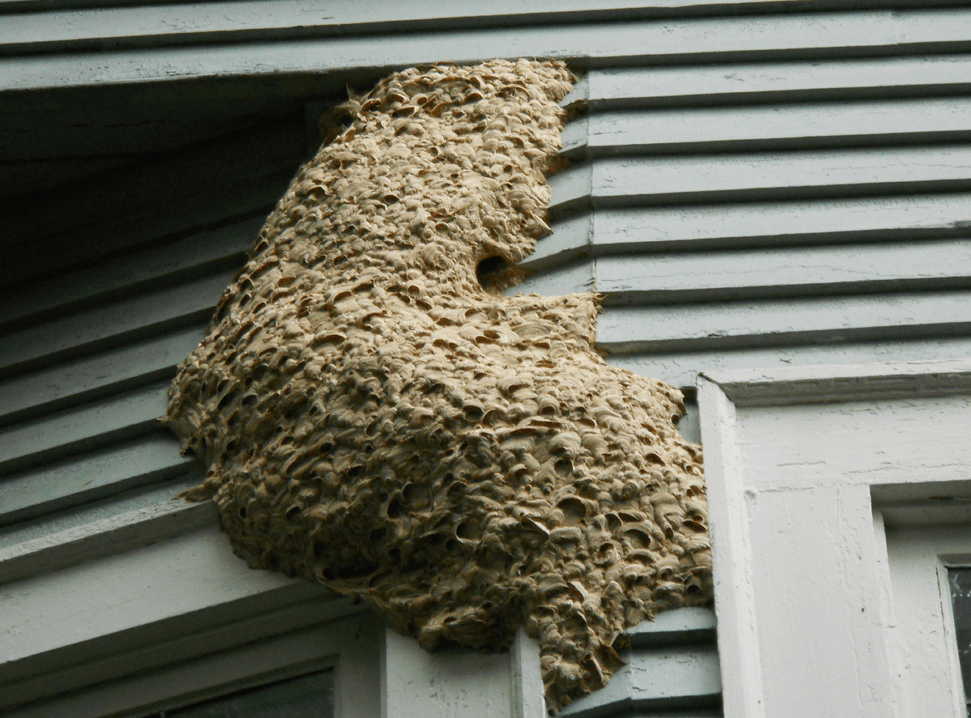Stinging insects play an important role in the ecosystem, but when they build nests too close to home, they can quickly become a threat. Depending on where they’re built, a beehive or stinging insect nest can either go unnoticed or become a serious problem.
Bees, paper wasps, and hornets often nest in attics, walls, soffits, under eaves and porches, or in tree branches. Others — like yellowjackets and some bee species — prefer to build their nests in the ground.
When these nests are located near entrances, windows, decks, or inside your home, they can pose a real risk. In these cases, removal should always be handled by a professional. We specialize in safely removing all types of stinging insect nests, including those made by wasps, bees, yellow jackets, hornets, and paper wasps.
- Common stinging insects include bees, yellow jackets, wasps, and hornets.
- Infestations can trigger allergic reactions, damage your home, and attract other pests.
- Nests are often found on roofs, in soffits, under porches, or in trees and shrubs.
- Warning signs include stings, eggs, nests, and swarming insects.
- Professional removal is the safest and most effective solution.
What Are the Most Common Stinging Insects?
Residential areas are home to several species that sting, each with its own risks and behaviors:
Bees: Fuzzy, round-bodied, and often striped yellow and black, bees are usually docile unless provoked.
Yellow jackets: Sleek with vivid yellow and black stripes, yellow jackets are highly aggressive and easily provoked. They often nest underground or in wall voids, making yellow jacket nest removal complex and hazardous.
Wasps: Slim with narrow waists and smooth bodies, wasps can be surprisingly aggressive, especially in late summer. They’re known to build nests in hard-to-see spots and are capable of stinging multiple times.
Hornets: Larger than most wasps, hornets are more territorial and will defend their nests vigorously. Hornet removal should always be left to the professionals due to their painful stings and unpredictable behavior.
Why Are Stinging Insects Dangerous?
Stinging insects can pose more than just a physical threat, potentially jeopardizing your family’s health and your home’s safety. Issues may include:
Health risks: If anyone in your family has serious allergies, even a single sting could trigger a severe, potentially life-threatening reaction. In cases of an infestation, the chances of being stung multiple times increase significantly.
Structural damage: Some species, like bees and wasps, build nests inside walls, roofs, and ceilings. Over time, these nests can weaken wood, trap moisture, and lead to mold or rot.
Secondary infestations: Leftover honey or abandoned nests can attract ants, rodents, and other pests looking for food or shelter, compounding the issue.
Once they’ve settled in, these insects can be hard to evict. Because of that, quick identification and action are a must.
Where Do Stinging Insects Nest?
Insects that sting choose nest locations that offer protection and proximity to food sources. These spots are often hidden in plain sight on your home or in your yard.
Structures


Soffits, those tucked-away areas under your roof’s overhang, are a popular nesting spot on your home since they provide shelter and elevation. Ceilings and roofs, including attics, roof eaves, and crawl spaces, are attractive for the same reasons but also offer warmth, which is especially appealing to bees and wasps.
They may also take up residence under your feet, building their nests under floorboards and porches. These shaded and low-traffic zones are the perfect environment for them to build their nests and grow their colonies unnoticed.
Trees and Shrubs

Tree branches and dense shrubbery offer ideal conditions for hornet and hanging wasp nests. These locations provide camouflage and easy escape routes, making removal particularly tricky.
What Are the Signs of Infestation?
Seeing a stinging insect fly by every now and again isn’t an issue, but when they keep appearing, or you start noticing specific signs, it might point to a growing infestation.
Signs You Need Professional Pest Control
Stings
Frequent stings are the most obvious red flag. If you or your family members are constantly falling victim to stinging insects, it’s time to investigate. This is especially important if anyone in your family is allergic.
Nests
Nests vary based on the species: Bees build waxy hives, while hornets and wasps create papery, football-shaped nests. They might be tucked under eaves, hidden in shrubs, or even inside wall voids.
Swarming
If you see large numbers of flying insects in one area, especially hovering around entry points or trees, there’s a good chance you have a nest nearby. Swarming behavior is particularly common during nesting season.
Eggs
In most cases, you won’t spot the eggs because they are hidden within the nest. Professionals who are trained to recognize early egg-laying activity can help determine whether the colony is growing rapidly.
Call Trutech In to Get Stinging Insects Out
Wondering how to handle stinging insects and evict them from your home? The answer is simple: don’t go it alone.
At Trutech, we offer hornet nest removal, wasp removal, and bee removal near you. We have the training and tools to remove the stinging insects safely, and we go a step further by repairing any damage they’ve caused to your home.
Whether you need help with bee hive removal, are wondering how to remove a yellow jacket nest, or need full wasp removal near you, you can trust us to get the job done right. Contact us today to evict stinging insects from your home.


